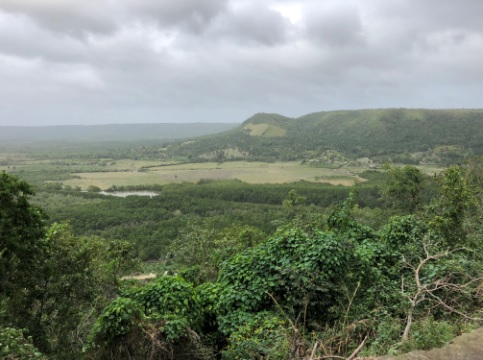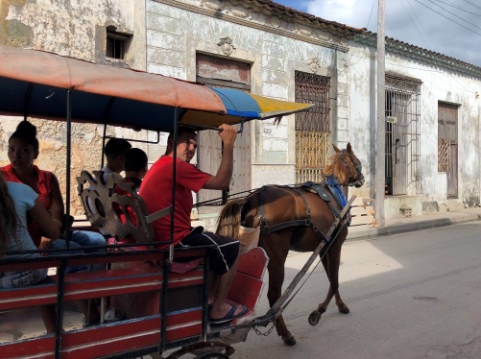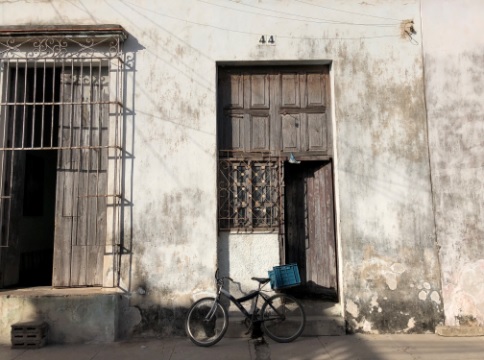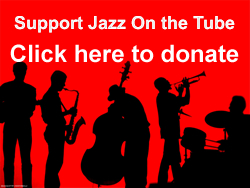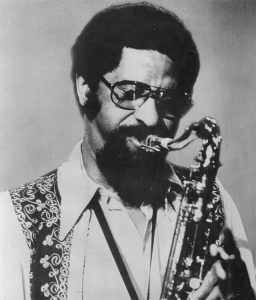Afro-Cuban culture, Cuba, Cuban Jazz, Latin Jazz, The Cuba-US connection, Travel to Cuba, Video, Video and audio
Documentary about the blending of Cuban rhythms and American jazz, filmed in Cuba.
By: Dr. Mike Davison & Ed Tillett Supported by the University of Richmond
– Ken McCarthy
Jazz on the Tube
P.S. Our unique programming is made possible by help from people like you. Learn how you can contribute to our efforts here: Support Jazz on the Tube
Thanks.
Afro-Cuban culture, Cuba, The Cuba-US connection, Travel to Cuba, Video and audio
You’ve got to hand it to any band that can present a positive, upbeat image and get it up on the screen in 2021.
PALO! “La Habana Buena”. Song written by Leslie Cartaya, Roly Rivero and Steve Roitstein. Leslie Cartaya, lead vocal; Raymer Olalde, timbales; Ed Calle, sax; Philbert Armenteros, congas; Steve Roitstein, keyboards and arrangement. Produced by Steve Roitstein. Recorded, mixed and mastered by Phil Colodetti. Tres loop by Jose Elias. More info: GoPalo.com
Mas (2017)
PALO! “Agua Pa’ Los Santos” featuring guest artists Pedrito Martinez (lead vocals, batá); Roman Diaz (prayer poem, batá, chekere) and Descemer Bueno (lead vocal). Leslie Cartaya, lead vocal; Philbert Armenteros, lead vocal, batá; Ed Calle, sax; Raymer Olalde, timbales; Steve Roitstein, keyboards & beats. Produced by Steve Roitstein. Co-produced by Bobby Macuen. Edited by Sam Tapia. Filmed by Ralf Gonzalez (DP), Jose Iglesias, Andres Ramirez, Agape Lataillade and Joe Cardona. Leslie Cartaya’s concert look: Yas Gonzalez. Filmed and recorded at Brown University, Providence, RI. Special thanks to Richard Snyder for facilitating this project. Search http://pbs.org for “Ivy League Rumba” to watch the complete documentary behind this song. Drum loops: Lee Levin. Guitar loops: Dan Warner. More info: GoPalo.com
Afro-Cuban culture, Blog, Cuba, Travel to Cuba
Does the street scene look familiar?
It should. Santiago de Cuba (and Havana) were the architectural models for New Orleans.
New Orleans is far more Cuban in look than French. (Havana administered New Orleans when the Spanish controlled it during the important formative years between 1763 until 1803.)
In 1793, 30,000 French growers, refugees from the slave rebellion in Haiti, arrived in Cuba, mostly in Santiago de Cuba.
After a period of over 15 years in which they absorbed Cuban culture, these same people were expelled from Cuba between 1809 and 1810 by the Spanish after a political dispute between Spain and France. Most went to New Orleans where they had a huge impact on that city’s culture and music.
(Interestingly enough one of Cuba’s most beautiful and music cities, Cienfuegos, was founded by settlers from Bordeaux and Louisiana in 1819, so the influence flowed both ways.)
About La Familia Valera Miranda
La Familia Valera Miranda has been playing traditional Cuban son – the style popularized by Buena Vista Social Club – for generations. Music is a family affair for these famous musicians. Félix Valera Miranda, founder of the group, sings & plays guitar while his wife Carmen plays maracas. Their sons – Enrique, Raúl & Ernesto – play cuatro (an 8-string guitar tuned in pairs), bass & bongo respectively.
Since the 19th century, La Familia Valera Miranda has played a significant role in Cuban culture by collecting & preserving the deep-rooted traditions of the legendary Sierra Maestra mountain region. Original members of the family were subsistence farmers in the rural areas of the Oriente (eastern Cuba), primarily the Cauto River valley near the villages of Bayamo & Las Tunas. Later, they migrated to the areas around Santiago de Cuba & Guantánamo where they reside today.
The Valera & Miranda ancestors brought with them religious elements of Bantu origin alongside secular customs from the Canary Islands & Andalucía. These influences are found in their songs & the musical instruments they play.
More info: La Familia Valera Miranda
Great news!
You can now watch this video – and all Spanish language videos – with English subtitles. It’s free!
Click here for instructions on how to turn on English subtitles.
– Ken McCarthy
Jazz on the Tube
P.S. Our unique programming is made possible by help from people like you. Learn how you can contribute to our efforts here: Support Jazz on the Tube
Thanks.
Go to Cuba with Jazz on the Tube as your guide:
Click here for details
Afro-Cuban culture, Blog, Cuba, Cuban Jazz, The Cuba-US connection, Travel to Cuba, Video and audio
You’ve got to hand it to Harvard. They’ve got money and in this case they knew how to spend it.
This short video is an excellent musical and visual survey of some of the best that the western part of Cuba has to offer music lovers.
Cuban saxophonist, percussionist and composer Yosvany Terry directs the jazz bands at Harvard where he is also a Visiting Senior Lecturer on Music.
He arranged to bring the school’s jazz band and other students to Cuba for a nine day tour.
They hit all the hot spots: Güines, the home of the birthplace of percussion genius Tata Güines; Mantanzas, where they heard the danzon group Orquesta Típica Miguel Failde and the rumba super group Los Muñequitos de Matanzas; and Havana where they met and played with Cuba jazz patriarch Bobby Carcassés, chekeré master Don Pancho Terry, trumpeter Julito Padrón, and bass player Gastón Joya.
They also visited three conservatories in Havana, Guillermo Tomás, Amadeo Roldán, and the National Schools for the Arts (La Ena), something casual tourists can’t do.
Great news!
You can now watch this video – and all Spanish language videos – with English subtitles. It’s free!
Click here for instructions on how to turn on English subtitles.
– Ken McCarthy
Jazz on the Tube
Afro-Cuban culture, Blog, Cuba, Travel to Cuba, Video and audio
The city of Matanzas has a population of about 140,000 people, about 7% of Havana.
It’s about an hour and a half east of Havana by car along a very well-maintained highway.
It’s one of the most important centers of Afro-Latin music and religion in the world, yet as the subtitle of Miguel Bretos’ excellent book on the city says, it’s “The Cuba Nobody Knows.”
More accurately, it’s the city casual tourists don’t know. Everyone who is knowledgeable about Afro-Cuban music and religion knows all about the city.
Jazz on the Tube took David Amram there (it was his first visit to Cuba outside of Havana) to visit Los Muñequitos de Matanzas.

David Amram jamming with Los Muñequitos de Matanzas in front of their headquarters.
A Los Muñequitos rumba to celebrate the birthday of the young daughter of one it its members.
There are three varieties of rumba: Yambú, Guaguancó and Columbia. You’re looking at Yambú.
Los Muñequitos de Matanzas in concert in Matanzas.
A friend makes us Frituras De Malanga
Alturas de Simpson. It’s a neighborhood in Matanzas, Simpson Heights, and also the title of an iconic danzón (1879) written by Miguel Faílde who was a pioneer of the genre.
 This is the view from Ermita de Monserrate. On one side of
This is the view from Ermita de Monserrate. On one side of
the ridge is the city and bay and on the other is this. Everyday transportation in many parts of Cuba including Matanzas: Self-replicating; runs on locally produced, non-toxic fuel; produces organic fertilizer; and environmentally sound
Everyday transportation in many parts of Cuba including Matanzas: Self-replicating; runs on locally produced, non-toxic fuel; produces organic fertilizer; and environmentally sound I judge countries on how well they take care of their children.
I judge countries on how well they take care of their children.
In that category – and many others – Cuba is #1 Matanzas: Those who know, know. Those who don’t, don’t.
Matanzas: Those who know, know. Those who don’t, don’t.
Great news!
You can now watch this video – and all Spanish-language videos – with English subtitles. It’s free!
Click here for instructions on how to turn on English subtitles.
– Ken McCarthy
Jazz on the Tube
Go to Cuba with Jazz on the Tube as your guide:
Click here for details
Blog, Cuba, Travel to Cuba
Interview
Download the mp3 here
Go to Cuba with Jazz on the Tube as your guide:
Click here for details
Disclaimer
I am not a lawyer. I am not pretending to be a lawyer. I am not selling, offering or giving away legal advice.
Check everything I say with your own research, common sense, and your own attorney.
Travel journalists and tour companies which charge $300 to $500+ a day for $100 worth of services (or less) aren’t going to do your research for you. They would like you to believe that you can’t visit Cuba legally without their “assistance.”
This audio explains the other side of the story
First, read the law. You might want to print it out and carry it with you.
Click here for: Report published in the Federal Register
Here’s the law:
Title 31 Subtitle B Chapter V Part 515 Subpart E Section 515.574
§ 515.574 Support for the Cuban People
(a) General license. The travel-related transactions set forth in §515.560(c) and other transactions that are intended to provide support for the Cuban people are authorized, provided that:
(1) The activities are of:
(i) Recognized human rights organizations;
(ii) Independent organizations designed to promote a rapid, peaceful transition to democracy; or
(iii) Individuals and non-governmental organizations that promote independent activity intended to strengthen civil society in Cuba; and
(2) Each traveler engages in a full-time schedule of activities that:
(i) Enhance contact with the Cuban people, support civil society in Cuba, or promote the Cuban people’s independence from Cuban authorities; and
(ii) Result in meaningful interaction with individuals in Cuba.
(3) The traveler’s schedule of activities does not include free time or recreation in excess of that consistent with a full-time schedule.
Go to Cuba with Jazz on the Tube as your guide:
Click here for details
What does this mean in the real world?
1. To my non-attorney eyes, the law permits individual American citizens to travel for the purpose of providing “Support for the Cuban People.”
Support for the Cuban people is defined as activities intended to “promote independent activity intended to strengthen civil society in Cuba.”
2. The law prohibits and provides a list of entities you, as an American citizen, may not do business with.
Click here for the list of forbidden companies.
3. The law requires that you engage in activities in support of the Cuban people on a full time basis (practically speaking six hours a day, five out of seven days a week) and specifically forbids things like laying around on the beach drinking daiquiris (unless it’s your “time off.”)
Here are two credible sources that attempt to define what this vague language means in practical terms:
Source #1 – Cornell Law School
Source #2 – Viahero
4. The law requires that you keep records of your trip for five years in case some bureaucrat shows up at your door someday asking you why you went. Records would be a simple diary and receipts.
That’s it.
Based on my ability to read simple English – and to avoid being flimflammed – it appears to me that if I follow these guidelines I can travel to Cuba legally.
Does that mean that you or I can do this without hassles from U.S. government functionaries?
We may or may not avoid hassles coming back into our own country, but as you probably know there are U.S. government functionaries ready to hassle you about virtually everything – including coming home from countries like Canada, Mexico, the UK and Switzerland.
To defuse potential hassles coming back into the “Land of the Free” (the US):
1. Bring a copy of the law
2. Bring a copy of the forbidden entities to show you are aware of the law and to assure whoever that you avoided transactions with them
3. Bring a diary with receipts that records your daily activities
Listen to my audio. Read the resources I’ve linked to. Forewarned is forearmed.
If, after you’ve done your own research and thinking, you want to go to Cuba as an independent traveler, we can help.
Click there for details
Go to Cuba with Jazz on the Tube as your guide:
Click here for details
– Ken McCarthy
Jazz on the Tube
P.S. Our unique programming is made possible by help from people like you. Learn how you can contribute to our efforts here: Support Jazz on the Tube
Thanks.


